

Catch Fish with
Mike Ladle
Information Page
SEA FISHING
For anyone unfamiliar with the site always check the FRESHWATER, SALTWATER and TACK-TICS pages. The Saltwater page now extends back as a record of over several years of (mostly) sea fishing and may be a useful guide as to when to fish. The Freshwater stuff is also up to date now. I keep adding to both. These pages are effectively my diary and the latest will usually be about fishing in the previous day or two. As you see I also add the odd piece from my friends and correspondents if I've not been doing much. The Tactics pages which are chiefly 'how I do it' plus a bit of science are also updated regularly and (I think) worth a read (the earlier ones are mostly tackle and 'how to do it' stuff).
Now some lure fishing.
Spinning then and now! The lures 1.
The 1970s when we were learning the ropes. Note the spinning, fly and float rods. The nets, thigh boots and my hard hat are no longer used.
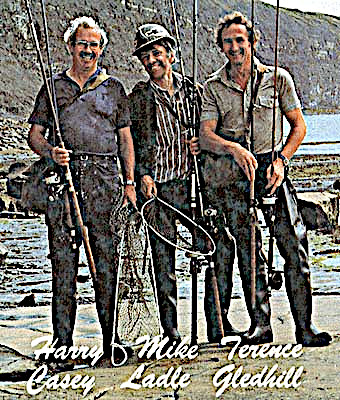
I don't have a lot of tackle. My original rod (which I used for 95% 0f my bassing) was a 12 foot carp rod with a through action and a TC of under two pounds; it wasn't very expensive. I liked the long butt which I could tuck under my arm when I cast. The long rod also made it easy to steer lures (and bass) round obstacles. Most modern rods are much shorter, stiffer and lighter. I'm a bit of a 'stick-in-the-mud' so I still use ten or eleven foot spinning rods and I don't think it is critical. Long ago, I had two Shimano Baitrunner reels for spinning, even when fishing bait I almost never used the baitrunner facility.
Good quality, 8lb mono was my bass spinning line of choice for many years, and easily coped with bass of any size under a range of fishing conditions. However, braided lines have been a definite step forward because they do cast even better, they allow you to feel exactly what is going on with the lure and give an instant, firm contact with taking fish. An additional bonus is the fact that, due to their amazing strength/thickness ratio, they often allow you to rescue lures from kelp, wrack and rocks.
An assortment of effective early lures.
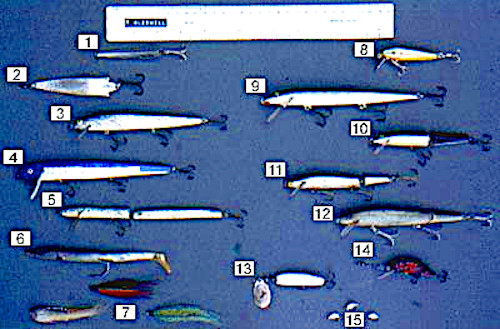
Note that the most of the lures illustrated are buoyant,shallow-diving plugs. The advantages of these lures were many:- they cast pretty well on 8lb nylon - some further than others, after 'touch-down' they didn't sink to a watery grave, they were fairly durable, they could be retrieved at a range of speeds without plunging into the snags so you didn't lose many, jointed or unjointed they looked like prey and attracted bass of all sizes, they hooked fish well, they were not too expensive to buy and, at a pinch, you could make your own (number 5 was an effective home-made version). The metal lures, flies and spinner were useful but only in limited situations and the vast majority of bass were caught on the plugs. Although other types of lure have since become popular, buoyant plugs are still extremely successful.
The logic for using plugs - a bass stomach, the stomach content (sandsmelt) and the Rapala J11f that caught the bass.
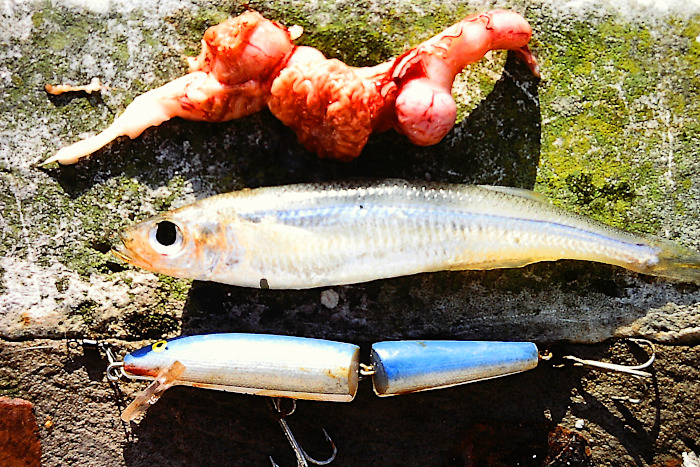
I've tried lots of clips and links over the years. These days my lures are often attached to the line by means of small, Breakaway mini-links. They allow quick and easy changes, even with quite thick hook eyes, and are very strong and reliable. The alternative attachment is to tie a loop or a knot direct to the lure. I only use swivels (about 25lb B.S.) on the odd occasion that I fish with a fast spinning lure. My wire traces (for pike, barracuda, etc.) are, however, made up with a link on one end and the swivel at the other. For bass, I use a metre or so of clear, 15lb Amnesia between the braid and the lure. The main reason for this is to avoid any chance of a hook catching in the braid, but it may (or may not) have the advantage of reduced visibility at the business end of the line. Some of my pals, use several metres of fluorocarbon as a trace; others tie direct to the braided line. It seems to make little difference to catches.
Me and my pal Harry plugging. In those days we wore thighboots.
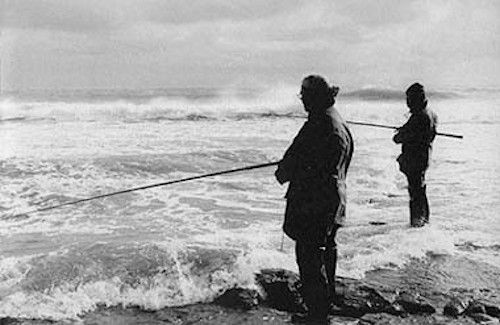
Even chesties wouldn't have saved me from a soaking - but it was often worth it.
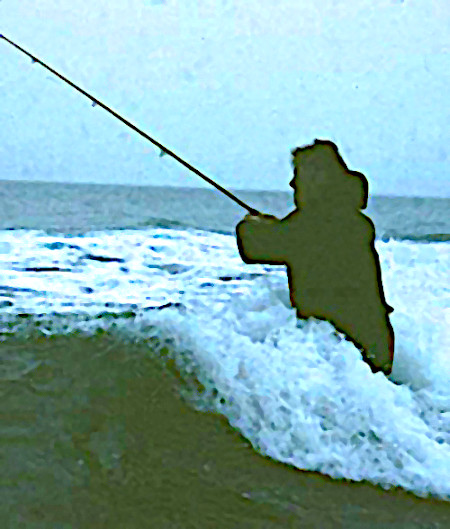
Harry and me with part of a catch of seven fish made, using a Rebel plug, in about an hour.
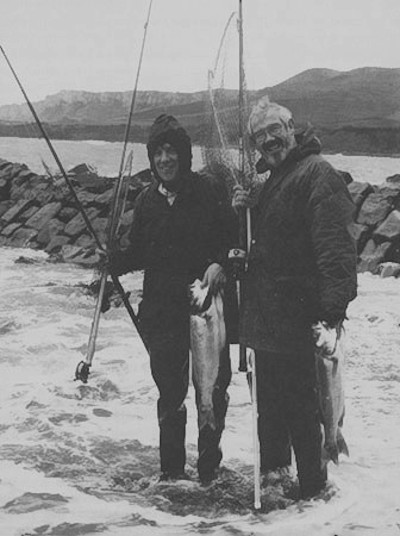
A cracking fish caught on a Rebel J30 - which was one of our favourite plugs for some time.
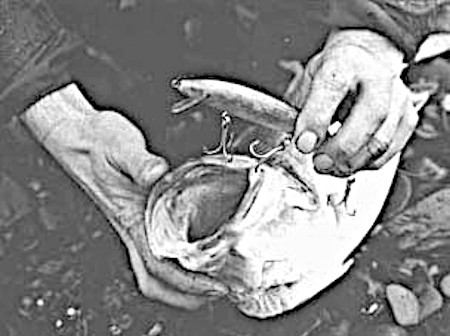
Another nice plugged bass - the net in the picture is just an ornament, we never used one.
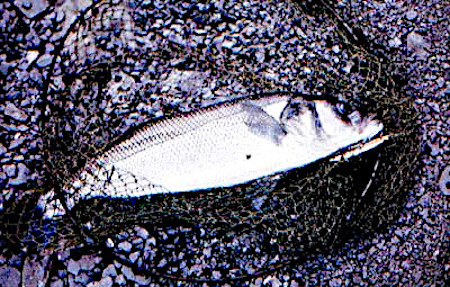
This big fish took a lurid Nils Master plug which is still in my box and almost an antique.
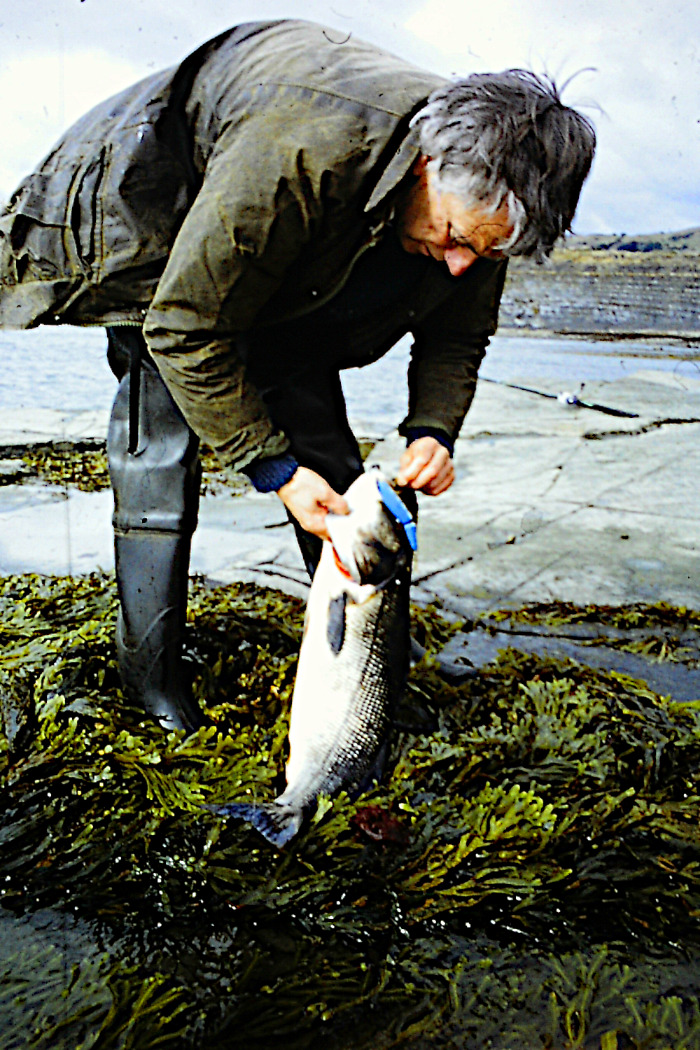
When we discovered that wrasse took bass plugs we successfully used the Rebel Crayfish for them.
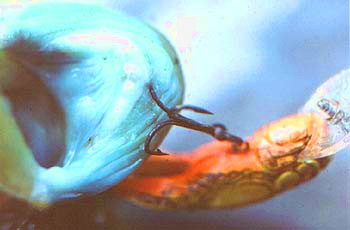
Next time I'll look at the shift from plugs to other types of lure.
If you have any comments or questions about fish, methods, tactics or 'what have you.'get in touch with me by sending an E-MAIL to - docladle@hotmail.com
– PLEASE TELL YOUR TWITTER, FACEBOOK, EMAIL FRIENDS ABOUT THESE BOOKS.
NEW BOOK
"Fishing for Ghosts - Successful Mullet Angling"
written with David Rigden IT'S AVAILABLE FROM -ALSO THE NEW BOOK
“The Second Wave”
Written with Steve Pitts this is a SEQUEL TO THE BESTSELLER "Operation Sea Angler" IT'S AVAILABLE ON PAPER OR FOR YOUR KINDLE FROM -